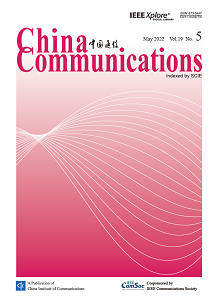COMMUNICATIONS THEORIES & SYSTEMS
Yi Zhang, Shuai Han, Weixiao Meng, Xunan Li, Yue Chen
2022, 19(5): 24-45.
In this paper, we consider a full-duplex (FD) millimeter wave (mmWave) multiuser integrated access and backhaul (IAB) system with massive MIMO, %Editor: Abbreviations and acronyms are often defined the first time they are used within the abstract and again in the main text and then used throughout the remainder of the manuscript. Please consider adhering to this convention. The target journal may have a list of abbreviations that are considered common enough that they do not need to be defined. and the system asymptotic performance and interference cancellation schemes are investigated. First, the asymptotic performance of the IAB system with massive MIMO is analyzed. As the number of macro base station (MBS) and small base station (SBS) antennas approaches infinity, the FD self-interference (SI), inter-tier interference and noise can be eliminated, which means that only multiuser interference remains in the system. Then, multiuser interference can be suppressed by the base band (BB) precoders. Since all interference and noise are suppressed, the spectral efficiency of the SBS and users are infinite in theory. Then, two interference suppression precoding schemes are proposed. A block diagonalization (BD)-based interference cancellation scheme is designed based on the channel characteristics and null space projection. The FD SI, inter-tier interference and multiuser interference are eliminated by BB precoders. Instead of eliminating interference completely, a signal to leakage and noise ratio (SLNR)-based precoding scheme is derived to suppress both interference and noise. By utilizing the Rayleigh-Ritz theorem, the SLNRs of the SBS and users are optimized. Simulation results show that all the interference can be effectively eliminated by the BD-based scheme at the cost of spectral efficiency performance loss, while the SLNR-based scheme can balance interference and noise and achieve higher spectral efficiency with comparatively low interference level. Therefore, the BD-based scheme is more suitable for interference elimination cases, and the SLNR-based scheme can improve the system performance in low interference scenarios.
